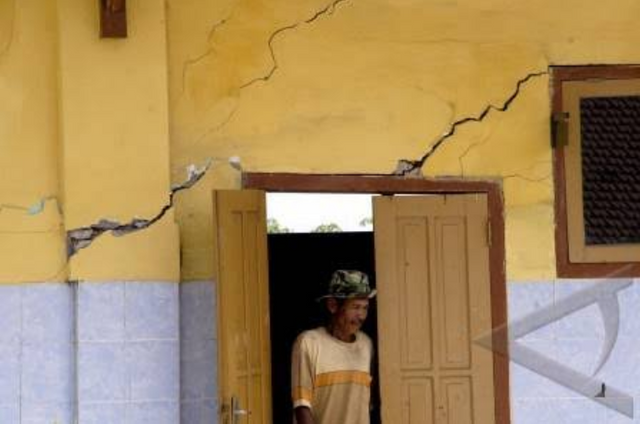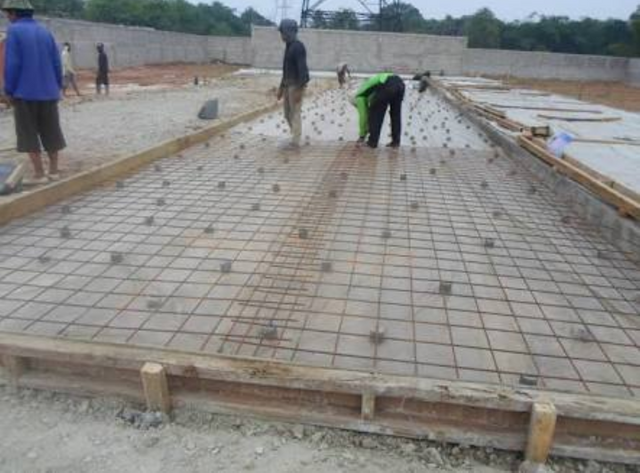Reinforced Concrete Also Has Problems That Can Reduce Its Superiority
Reinforced concrete is an excellent composite structure for use in building construction. In reinforced concrete structures there are various advantages due to the incorporation of two materials, ie concrete (fine + PC aggregate + coarse aggregate + additive) and steel as reinforcement.
We know that the advantages of concrete have high pressure strength, while the reinforcing steel is very good to withstand tensile and shear forces. The combination of concrete and reinforcement materials allows construction agents to acquire new materials with the ability to withstand compressive, tensile, and shear forces. So the overall structure of the building becomes stronger and safer.

Because of the advantages it has, then the use of reinforced concrete as the main building material is very popular. Reinforced concrete is more of a choice than other materials such as bamboo, wood, conventional or steel concrete. The application of reinforced concrete to building structures can usually be found on foundations, sloofs, columns, beams, concrete plates, and shear walls.
But behind the advantages of reinforced concrete when compared with other materials, reinforced concrete also has problems that can reduce its superiority. Among, often encountered crack problems that occur in the material. Reinforced concrete slits may arise during pre-construction and post-construction.
Actually, any reinforced concrete applied to the structure of the building will certainly occur cracks, which must be considered is? whether the crack can be tolerated because it is harmless or cracks harmful to the whole building.
Reinforced concrete slits are caused by several factors:
- Due to the influence of the nature of the concrete itself
- As well as external environmental factors that affect the concrete directly
If we look at the crack type, there are two types of cracks in reinforced concrete:
- Cracks occurring during concrete manufacture, and
- Cracks that occur after the concrete is complete
Of the two types of cracks, there are many factors that lie behind the crack. Factors that cause cracks in reinforced concrete?

- The Nature Of Concrete
To see how reinforced concrete properties can cause cracks, we have to look at the process from the beginning of reinforced concrete manufacturing. At the beginning of reinforced concrete by mixing the constituent materials such as gravel, sand, water, cement, and reinforcing steel. In the process of hardening the concrete will decrease the volume. Generally this is due to the water contained in the concrete mixture will experience partial evaporation that reduces the volume of reinforced concrete.
Thus, when conditioned as hardened concrete and reduced concrete volume results in shrinkage of concrete, but the concrete is allowed to shrink in the absence of loading, then the concrete will not crack. However, on field conditions there is actually no concrete that has no loading. Because there are no beams or columns in the stand-alone building, but will be put together and this will make the reinforced concrete work load-bearing on the building.
So, if the concrete conditions depreciate the volume, then the loading occurs, then cracking can not be avoided.
- Temperature
Temperatures that can not be ignored can also cause cracks in reinforced concrete. Because when the reinforced concrete mix is subjected to hardening, the temperature arising from the water reaction with the cement will continue to increase. Thus, when the concrete mixture temperature is too high, when the concrete is hard, cracks often arise on the surface of the concrete.
- Corrosion In Strengthening
In fact, to anticipate the cracks that occur due to the nature of the concrete itself, reinforced concrete on the inside made of steel. Therefore, it is expected with reinforcing steel, cracks due to the concrete properties scattered throughout the concrete to be a very small part, so cracks can be ignored. However, if the amplifier used during the manufacture of concrete is corroded, the strengthening will also cause cracks when the concrete is hard.
- The Process Of Making Less Good
There are many causes of cracks that occur in reinforced concrete caused by poor manufacturing process. For example, if the concrete is done with plenty of water, it is necessary to maintain the concrete in order to remove water from the excessive mixture of concrete. However, due to lack of maintenance, so that when the concrete is formed, then the concrete will have many loopholes.
- Unprofitable Materials
Many cracks occur in reinforced concrete structures due to poor constituents. Some things that are often found are fine aggregates or less clean sand, still mixed with mud so that the bond between cement and aggregate becomes detached. So, when drying the concrete will easily crack.
- How To Repeat It
Often I find reinforced concrete structures that are made in a less precise way. The most common thing happens is the thickness of the reinforcement until the concrete surface is too large. This is less precise because the reinforcing steel function is to withstand latitude, this is often the case with beams and floor plates, deflection deformation, and shear forces.
But, if the thickness of the concrete blanket is too large it will also cause cracks, usually from the surface of the concrete structure to the reinforcement inside. The amplifier should be made slightly outward, and the blanket or skin wrapping the reinforcement is made (1.5 cm to 2 cm). Due to the largest tensile and tap force on the concrete edge.
Factors that cause concrete loopholes that occur after the manufacture of reinforced concrete:

- Effect Of Environment
Because the reinforced concrete of the building is in direct contact with the outside weather, the impact of this weather contributes little to the crack in the concrete, resulting in the construction of old buildings undergoing many cracks. One of the environmental influences that causes cracked concrete is the result of rainwater. Due to the old concrete on the building directly get rain water, from time to time the rain water entering the pores of concrete that then reach the concrete reinforcement.
If when the rain water is about steel reinforcement, there will be a reaction between reinforcing steel with reinforcement that causes steel reinforcement to be rusty or corrosive. As a result of corrosive steel reinforcement and added wide factors such as loading, the resulting concrete will crack.
- Load
Once the reinforced concrete structure is complete and the whole building is ready for use, the reinforced concrete structure will accept the load. Loads that work on reinforced concrete structures generally consist of their own loads and external loads. Examples such as: wind, human load, earthquake load, and so forth.
If the reinforced concrete structure receives the load according to the planned capacity, the concrete structure should be fine. But sometimes concrete will accept loads beyond its capability, and usually loads beyond the planned capacity is what causes cracks in concrete structures.
At the time of the crack, the reinforcement begins to take the full charge of the tensile load. This means that concrete does not carry a tensile load. The tensile load is transferred to the reinforcing steel. Structurally these conditions are designed in such a way that structural strength can be justified. The concrete cracks when the load begins to increase, but does not mean structural failure occurs.
The cracking location that occurs when the load begins to enlarge is at the base/edge of the upper and middle edge of the span at the bottom.
My experience, the gap that occurred only 1-2 cracks in one place of observation. Where the thickness is also not large. Whereas that often happens only a hair crack. Disunity like this should not need to be repaired at all. This is a natural condition and indeed the calculation has calculated the cracks that will occur.
The Conclusion:
If the concrete crack is still fair, like a fine crack or cracked hair like cracked, it does not need to be repaired. No need to worry too, because the calculation of the concrete structure has not taken into account the cracked concrete. However, if the crack is severe enough, more detailed research is required that includes structural calculations according to field conditions. Just covered with epoxy, enlarge the dimensions of reinforced concrete structures or be given additional reinforcement.


About The Science I Have Written:
Science: | Science: | Science: | Science: | Science: | Science: | Science: | Science: | Science: | Science: | Science: | Science: | Science: |